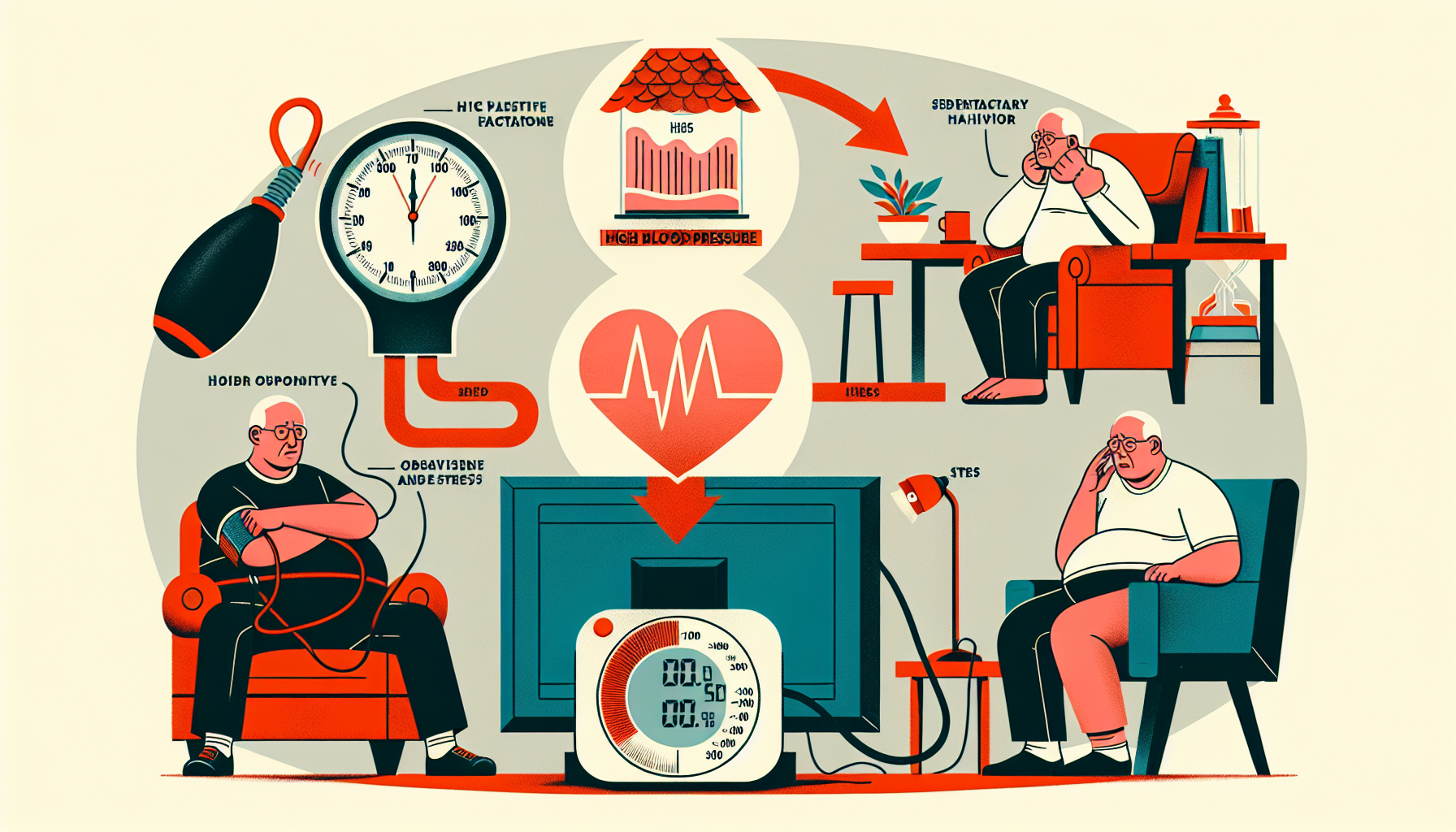What Are The 6 Areas Of Care?
Discover the 6 areas of care for personalized healthcare plans that meet your unique goals. Stay healthy with high-quality healthcare!
.jpg)
What Are The 6 Areas Of Care?
When it comes to healthcare, there are a lot of different terms and phrases that can be thrown around. One of the most important concepts to understand is the idea of the "6 areas of care." These six areas represent the different types of care that patients might need, depending on their health status and medical needs.
The 6 areas of care are:
- Primary care
- Secondary care
- Tertiary care
- Quaternary care
- Preventive care
- Palliative care
Each of these areas of care serves a different purpose and provides different types of support to patients.

Primary Care
Primary care is often the first point of contact for patients with healthcare needs. This type of care is generally provided by family doctors, general practitioners, and other healthcare professionals who are trained to deal with a wide range of health concerns. Primary care providers can help patients manage chronic conditions, provide preventive care, and refer patients to specialists when necessary.
Secondary Care
Secondary care is more specialized than primary care and is typically provided by specialists. Examples of secondary care include cardiology, dermatology, and neurology. Patients may be referred to secondary care providers by their primary care provider if they have a condition that requires more specialized treatment.
Tertiary Care
Tertiary care is an even more specialized type of care than secondary care and often involves complex procedures and treatments. Examples of tertiary care include organ transplants, cancer treatment, and neurosurgery. Patients are typically referred to tertiary care providers by their primary or secondary care provider.
Quaternary Care
Quaternary care is the most specialized type of care and involves cutting-edge treatments and procedures. This type of care is generally only available at a few specialized hospitals or clinics around the world. Examples of quaternary care include experimental treatments for rare diseases and advanced surgical procedures.
Preventive Care
Preventive care focuses on keeping patients healthy and preventing illness or disease before it occurs. This type of care can include things like vaccinations, cancer screenings, and lifestyle counseling. Preventive care is often provided by primary care providers.
Palliative Care
Palliative care is focused on managing symptoms and improving quality of life for patients who are dealing with serious or terminal illnesses. This type of care can include things like pain management, emotional support, and spiritual care. Palliative care is provided by a team of healthcare professionals, including doctors, nurses, and social workers.
Why Are the 6 Areas of Care Important?
Understanding the different areas of care is important for both patients and healthcare providers. Patients can use this knowledge to better understand their own healthcare needs and make informed decisions about their treatment options. Healthcare providers can use this information to coordinate care and ensure that patients are receiving the appropriate level of support.
The Impact of the 6 Areas of Care on Healthcare Costs
The six areas of care have a significant impact on healthcare costs. Primary care is generally the most cost-effective type of care, as it focuses on preventive measures and early intervention to manage health conditions before they become more serious and require more specialized treatment. On the other hand, quaternary care is often very expensive due to the cutting-edge treatments and procedures involved.
Understanding the different areas of care can help healthcare providers make more informed decisions about which types of care are appropriate for their patients based on both medical need and cost-effectiveness. By providing patients with the right level of care at the right time, healthcare providers can help reduce overall healthcare costs while still ensuring that patients receive high-quality, effective treatment.
How to Identify Which Area of Care Is Appropriate for a Particular Health Concern
Identifying the appropriate area of care for a particular health concern can be challenging, but it is important to ensure that patients receive the right level of support. In general, the level of care needed will depend on the complexity and severity of the health concern.
Patients with minor illnesses or injuries may only require primary care, while those with more serious conditions may need tertiary or quaternary care. Patients should start by consulting their primary care provider, who can help determine which type of care is appropriate based on their symptoms and medical history.
If a patient's condition requires more specialized treatment, their primary care provider may refer them to a specialist in secondary or tertiary care. In some cases, patients may need to travel to another city or even another country to access quaternary care.
It is important for patients to understand that healthcare providers work together to ensure that patients receive the appropriate level of support. By working collaboratively and communicating effectively, healthcare providers can help ensure that patients receive high-quality, effective treatment that meets their specific needs.
The Importance of Patient Education in Understanding the 6 Areas of Care
While healthcare providers play a critical role in identifying the appropriate level of care for patients, patient education is also crucial. Patients who understand the different areas of care are better equipped to make informed decisions about their health and can work more collaboratively with their healthcare providers.
For example, patients who understand the importance of preventive care may be more likely to schedule regular check-ups and screenings, reducing their risk of developing serious health conditions. Similarly, patients who understand the different levels of care may be better able to communicate with their primary care provider about whether they need a referral to a specialist.
Patient education can also help reduce healthcare costs by promoting early intervention and preventing unnecessary hospitalizations or emergency room visits. By understanding when it is appropriate to seek medical attention and which type of care is most appropriate for their needs, patients can help ensure that they receive high-quality, cost-effective treatment.
Healthcare providers can play an important role in patient education by providing clear and accessible information about the different areas of care. This might include brochures or handouts that explain each level of care in plain language, or online resources that patients can access from home.
By working together to promote patient education and understanding of the 6 areas of care, healthcare providers and patients can improve outcomes and reduce costs across the entire healthcare system.
The Role of Insurance Companies in Covering Healthcare Costs
Insurance companies play a critical role in covering the costs of different areas of care. In general, insurance plans will cover primary care and preventive care at little or no cost to patients. However, coverage for secondary, tertiary, and quaternary care may be more limited or may require patients to pay higher out-of-pocket costs.
In some cases, insurance plans may require pre-authorization before covering certain types of care. For example, a patient with a serious medical condition may need to receive approval from their insurance company before undergoing an expensive surgical procedure.
Understanding how insurance coverage works for different areas of care is important for both patients and healthcare providers. Patients should review their insurance plan carefully to understand what types of care are covered and what their out-of-pocket costs will be. Healthcare providers can help by working closely with patients to identify which types of care are appropriate based on both medical need and insurance coverage.
By working collaboratively with insurance companies and healthcare providers, patients can ensure that they receive the right level of support at an affordable cost. This can help improve outcomes while also reducing overall healthcare spending for individuals and society as a whole.
Variations in the 6 Areas of Care Across Different Healthcare Systems
The 6 areas of care can vary between countries with different healthcare systems. For example, in countries with a nationalized healthcare system, primary care may be more emphasized as the first point of contact for patients. In contrast, countries with a more privatized healthcare system may place greater emphasis on secondary and tertiary care, which can be more profitable for healthcare providers.
Additionally, access to quaternary care may be limited in some countries due to the high costs associated with cutting-edge treatments and procedures. This can result in patients needing to travel to other countries or pay out-of-pocket for expensive treatments.
Understanding how the 6 areas of care differ between countries is important for both patients and healthcare providers. Patients who are traveling or living abroad may need to adjust their expectations regarding the types of care that are available. Healthcare providers who work with patients from diverse backgrounds should also be aware of these differences to ensure that they are providing appropriate guidance and support.
By recognizing the ways in which the 6 areas of care can vary across different healthcare systems, we can better understand how to provide effective and equitable healthcare services around the world.
The Future of Healthcare: Advancements and Questions
As healthcare technology continues to advance, the future of healthcare will undoubtedly impact the 6 areas of care. For example, telemedicine and remote monitoring may allow for more effective primary care for patients who are unable to physically visit their doctor's office. Additionally, advances in precision medicine may lead to more personalized treatments in secondary and tertiary care.
However, these advancements also raise questions about access and affordability. Will all patients have equal access to these new technologies and treatments? How will insurance companies cover the costs of these new services? It is important for healthcare providers and policymakers to consider these issues as they work towards creating a more equitable and effective healthcare system for all.
How to Advocate for Yourself as a Patient When Navigating the Different Areas of Care?
Navigating the different areas of care and advocating for yourself as a patient can be challenging, especially if you have complex medical needs or are dealing with multiple healthcare providers. However, there are several steps you can take to ensure that you receive the appropriate level of care and support.
First, it is important to educate yourself about the different types of care available and which type of care is appropriate for your specific needs. This might involve consulting with your primary care provider, doing research online, or speaking with other patients who have similar health concerns.
Once you have a better understanding of the different areas of care, you can work with your healthcare providers to develop a comprehensive treatment plan. This might involve scheduling regular check-ups or screenings, working with a team of specialists to manage complex conditions, or exploring alternative therapies or treatments.
It is also important to communicate effectively with your healthcare providers and advocate for yourself when necessary. This might involve asking questions about your treatment options, expressing your concerns or preferences regarding certain types of care, or seeking a second opinion if you are unsure about a particular diagnosis or treatment recommendation.
Finally, it is important to stay organized and keep track of your medical records and appointments. This might involve creating a personal health record (PHR) that includes information about your medical history, medications, allergies, and other relevant details. You may also want to keep a journal documenting any symptoms or changes in your health status.
By taking these steps and advocating for yourself as a patient, you can help ensure that you receive the highest quality care possible across all six areas of care.
FAQs
What is the difference between primary and secondary care?
Primary care is typically the first point of contact for patients seeking medical attention and focuses on preventive measures and early intervention to manage health conditions before they become more serious. Secondary care involves more specialized treatment provided by specialists, usually upon referral from a primary care provider.
What types of treatments are included in quaternary care?
Quaternary care involves advanced treatments and procedures that are typically only available at a few highly specialized hospitals or clinics worldwide. Examples of quaternary care include experimental treatments for rare diseases and advanced surgical procedures.
How do I determine which area of care is appropriate for my specific needs?
The level of care required will depend on the complexity and severity of your health concern. Patients should begin by consulting their primary care provider, who can help determine which type of care is appropriate based on their symptoms and medical history.
How can I lower healthcare costs while still receiving high-quality treatment?
By understanding the different areas of care. and working collaboratively with healthcare providers to receive the appropriate level of support, patients can help reduce overall healthcare costs. Additionally, promoting patient education about preventive measures and early intervention can help prevent unnecessary hospitalizations or emergency room visits.
Summary
By understanding the 6 areas of care, patients and healthcare providers can work together to create a personalized care plan that meets the patient's unique needs and goals. Whether it's managing a chronic condition, undergoing a complex surgical procedure, or simply staying healthy, the 6 areas of care provide a framework for delivering high-quality healthcare services to patients.


































































































